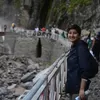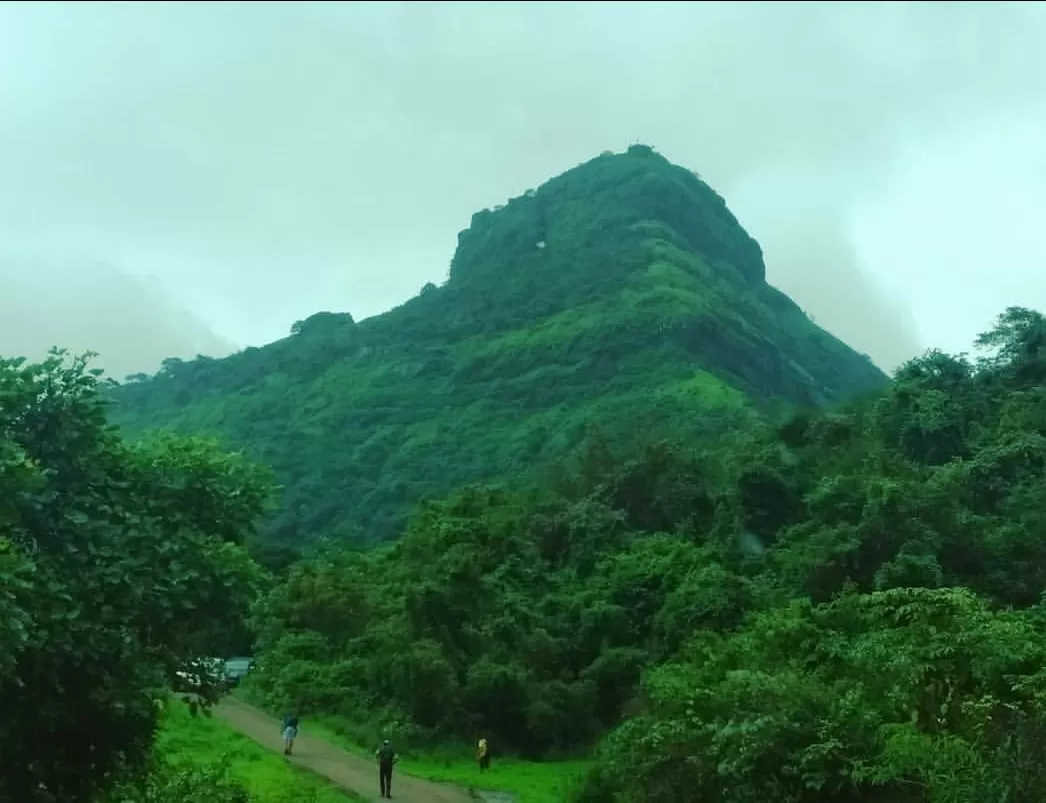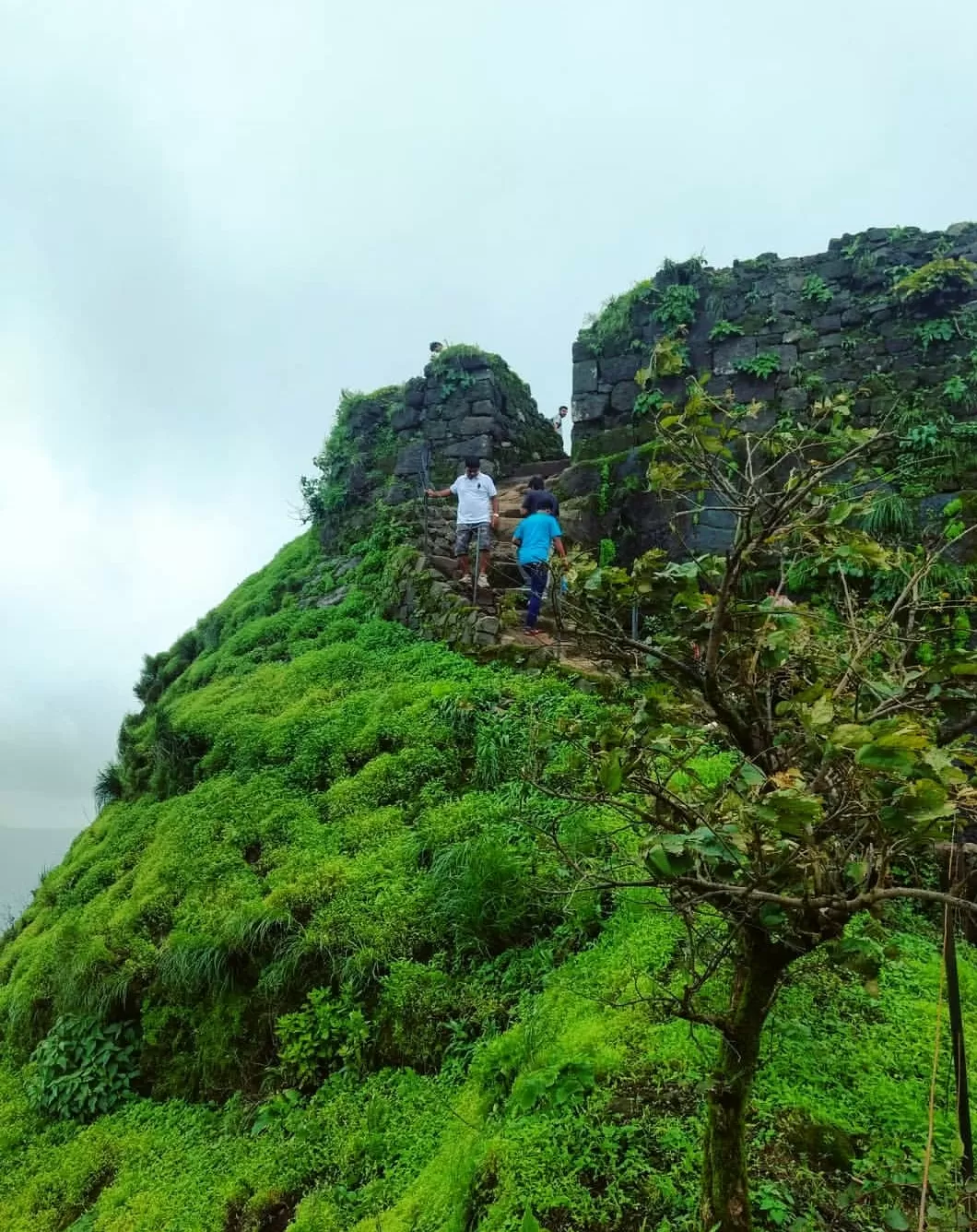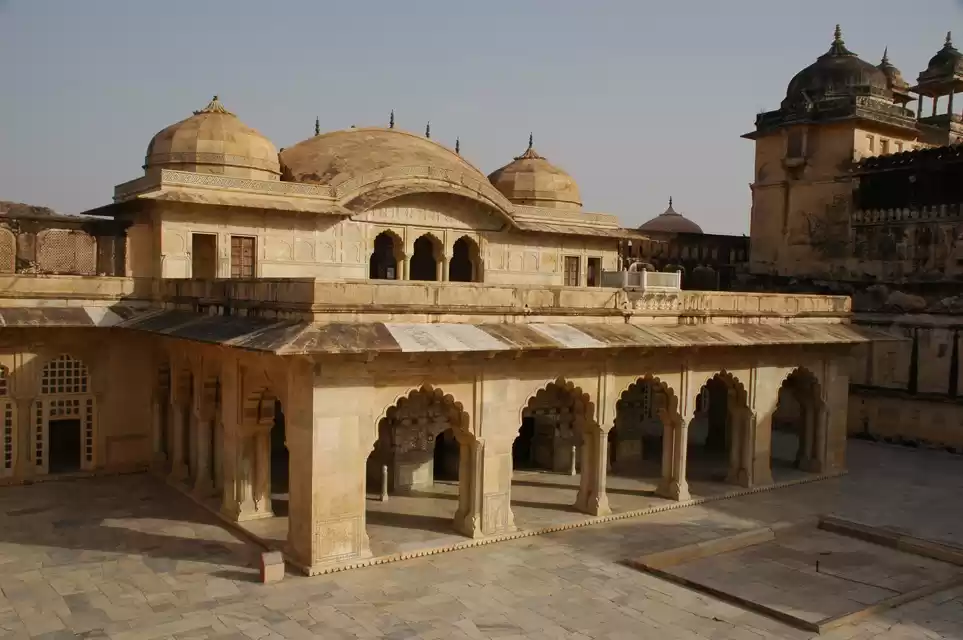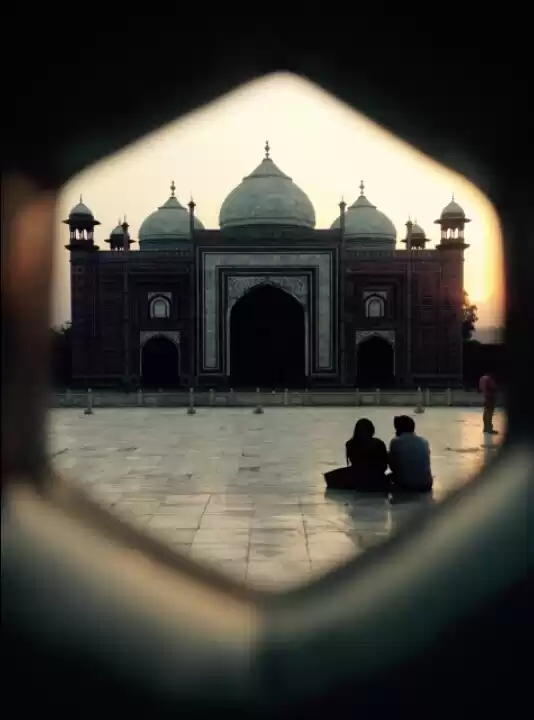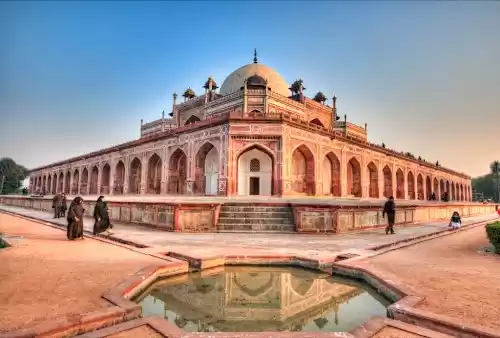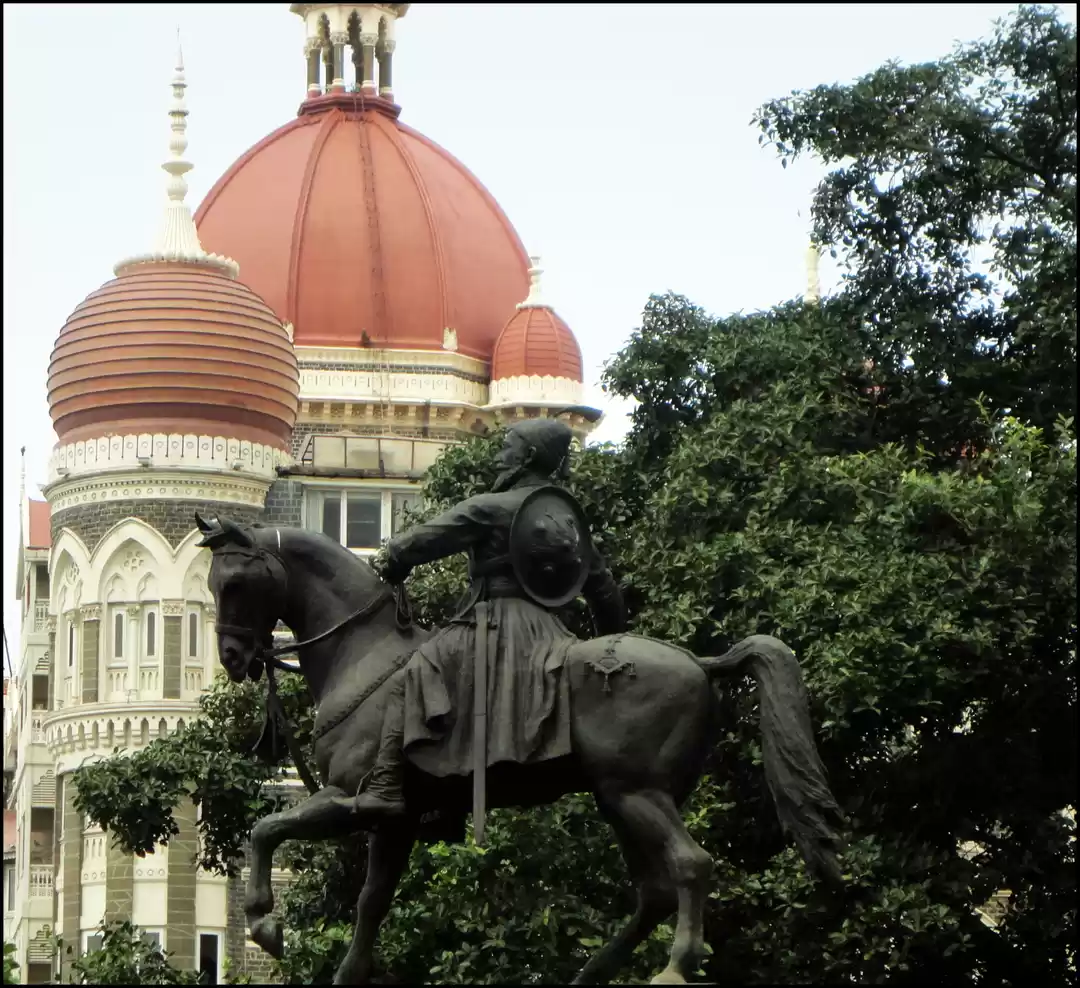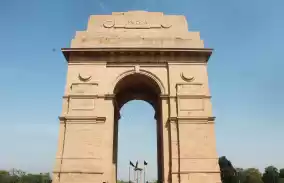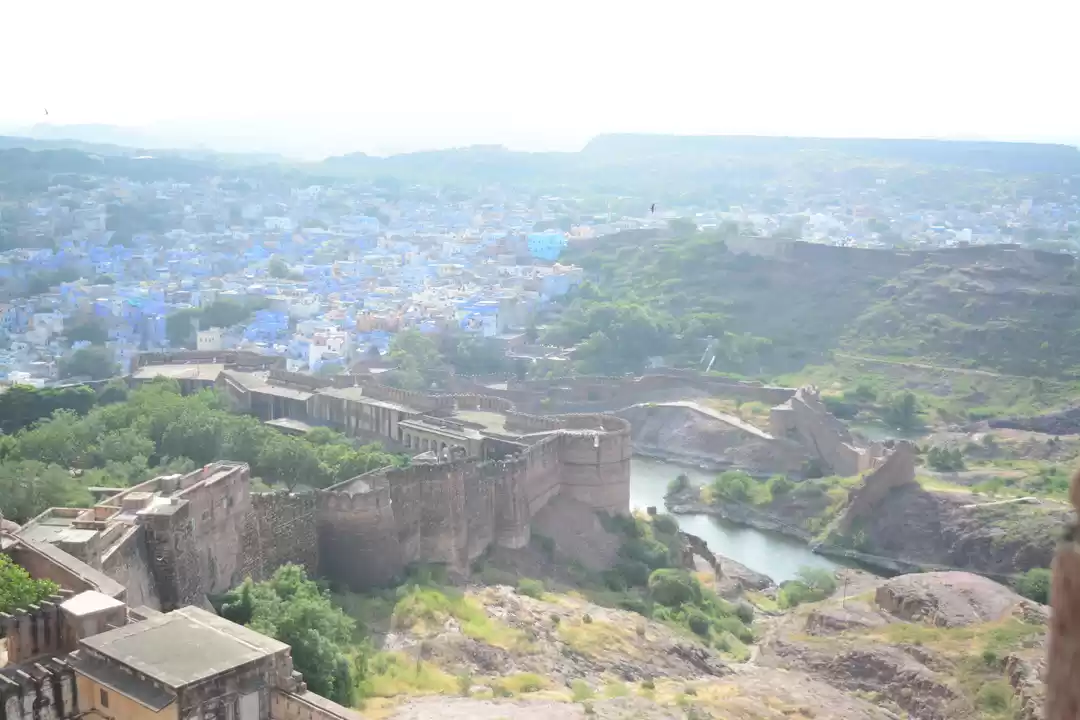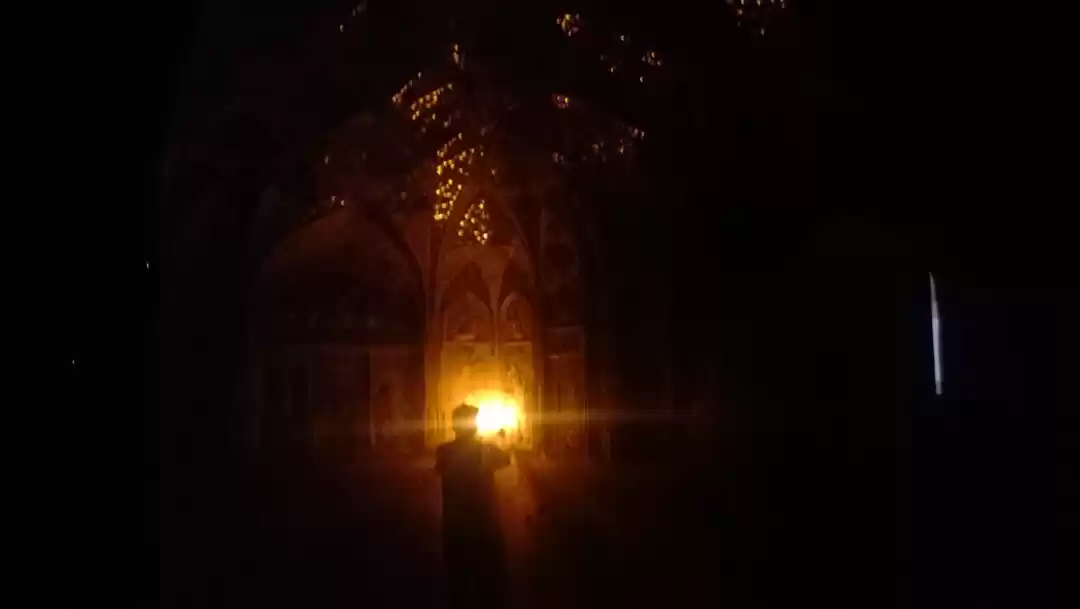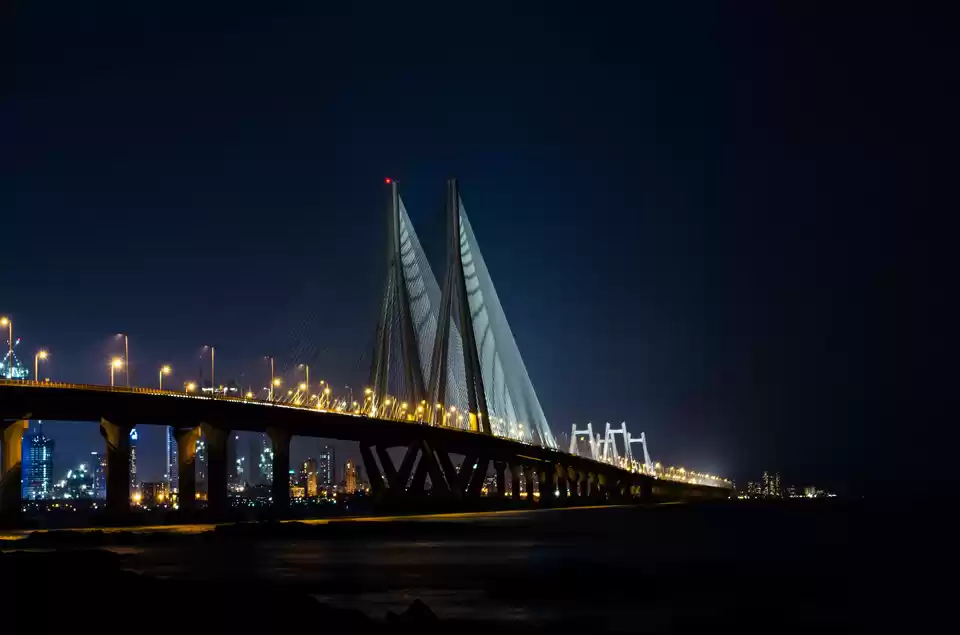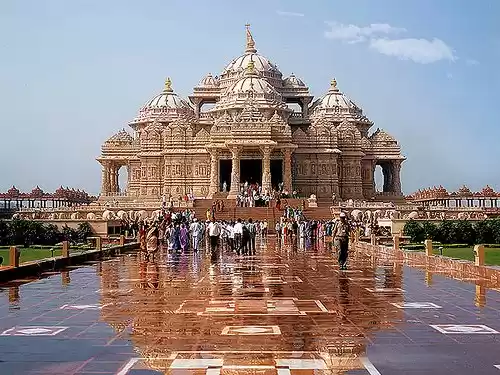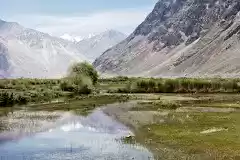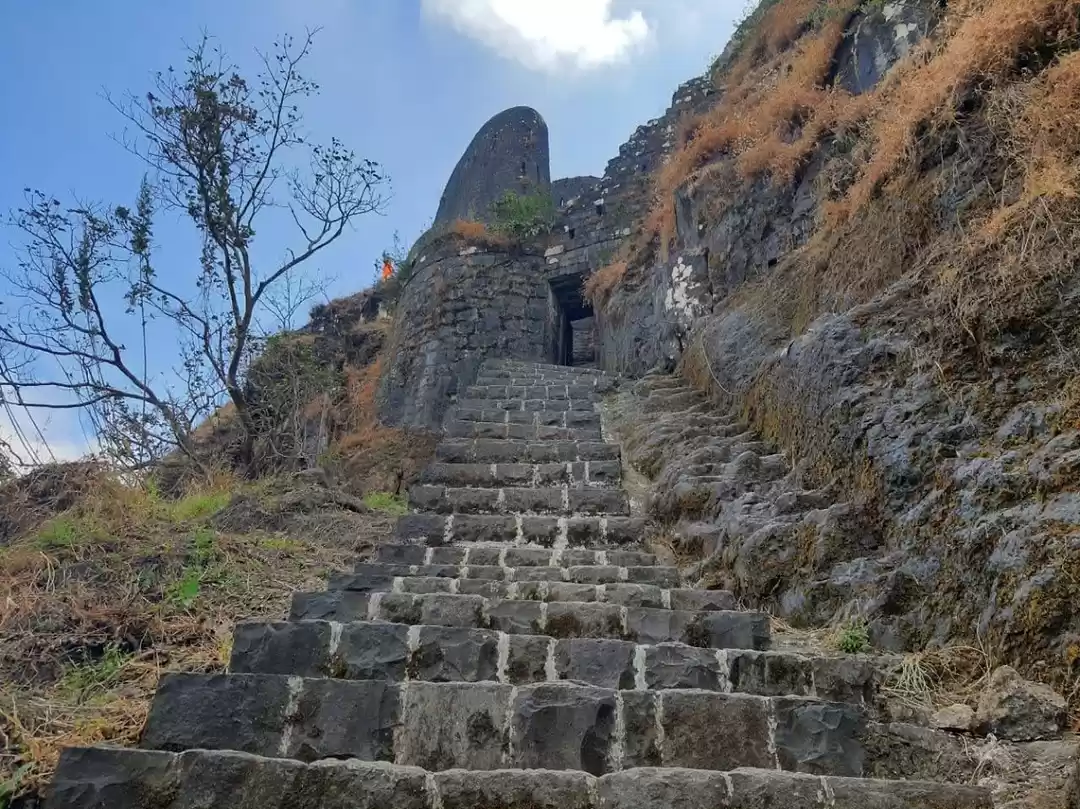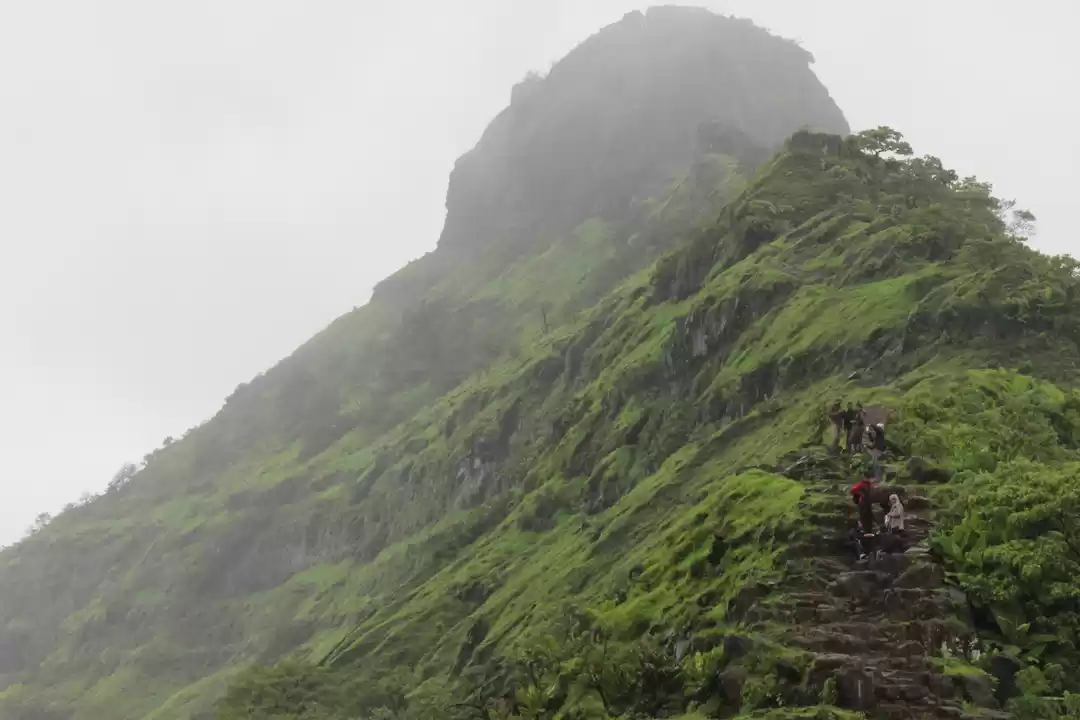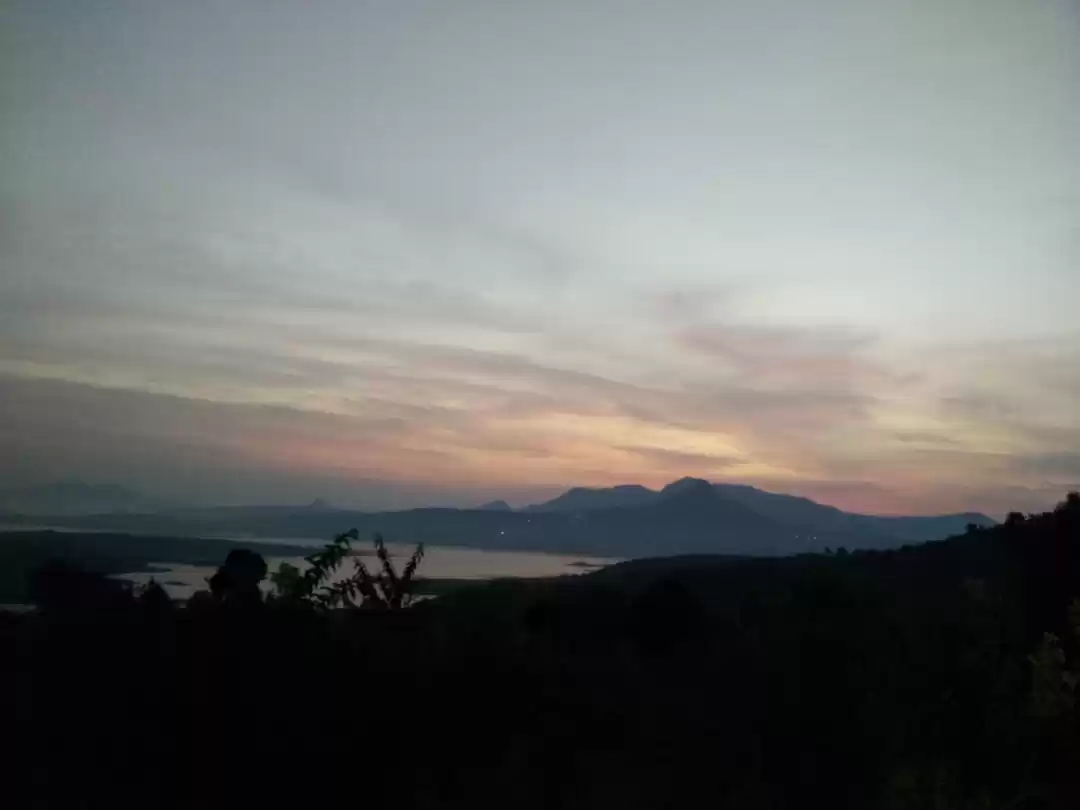Are you looking for a thrilling and scenic trekking destination near Mumbai or Pune? Do you want to explore a historical and architectural marvel that dates back to the 17th century? If yes, then you should definitely visit Tikona Fort, a triangular hill fortress that offers stunning views of the surrounding valleys, lakes, and mountains.
Tikona Fort, also known as Vitandgad, is located near Lonavala, a popular hill station in Maharashtra. It is one of the many forts that were built by the Maratha Empire to defend their territory from the Mughals and the British. Tikona Fort is famous for its triangular shape, its fortifications, its temple, its caves, and its views.
In this article, we will provide you with a comprehensive guide to Tikona Fort and its trekking experience. We will cover everything you need to know about Tikona Fort, such as how to reach, what to see and do, when to visit, and what to expect. By the end of this article, you will be ready to plan your next trip to Tikona Fort and enjoy its beauty and history.
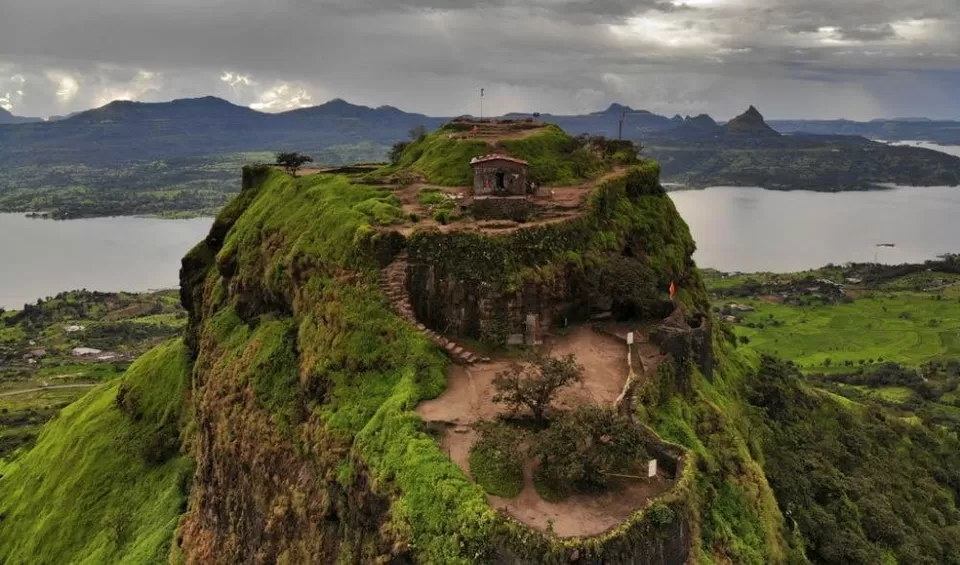
How to Reach Tikona Fort
Tikona Fort is situated at an altitude of about 3500 feet above sea level. It is about 60 km from Pune and 120 km from Mumbai. You can reach Tikona Fort by different modes of transport, depending on your preference and budget.
By Public Transport
If you are traveling by public transport, you can take a bus or a train from Mumbai or Pune to Kamshet, which is the nearest town to Tikona Fort. From Kamshet, you can take a local bus or a shared jeep to Tikona Peth, which is the base village for the trek. The bus or jeep ride will take about 30 minutes and cost around Rs. 30 per person.
Alternatively, you can also take a bus or a train from Mumbai or Pune to Lonavala, which is another hill station near Tikona Fort. From Lonavala, you can take a local bus or a shared jeep to Tikona Peth, which will take about an hour and cost around Rs. 50 per person.
By Private Vehicle
If you are traveling by private vehicle, you can drive from Mumbai or Pune to Tikona Peth via the Mumbai-Pune Expressway or the old Mumbai-Pune Highway. The drive will take about 2-3 hours depending on the traffic and road conditions. You can park your vehicle at Tikona Peth and start your trek from there.
You can also use online maps or GPS navigation apps to find the best route and directions to Tikona Peth. Some of the popular apps are Google Maps, Waze, and Here WeGo.
Tips for Choosing the Best Mode of Transport
1. Consider the traffic, weather, availability, convenience, and budget when choosing the best mode of transport.
2. Avoid traveling on weekends and holidays as the roads and trains may be crowded and congested.
3. Book your tickets in advance if you are traveling by bus or train as they may get sold out quickly.
4. Carry some cash as some of the buses or jeeps may not accept digital payments.
5. Hire a guide if you are not familiar with the route or the area as they can help you with directions and information.
Tikona Fort Trek: Route & Difficulty
Tikona Fort trek is one of the most popular and easy treks near Mumbai and Pune. It is suitable for beginners as well as experienced trekkers. It is also ideal for families and groups as it is not very strenuous or risky.
Trek Route
The trek route starts from Tikona Peth, which is the base village for the trek. You can reach Tikona Peth by bus, jeep, or car from Kamshet or Lonavala. From Tikona Peth, you can follow the signboards or ask the locals for directions to the trekking trail.
The trekking trail is well-marked and maintained. It is about 3 km long and takes about 1-2 hours to complete one way. The trail passes through green fields, rocky patches, forested areas, and steep slopes. Along the way, you will encounter some landmarks such as:
1. A small lake that serves as a water source for the villagers
2. A Hanuman temple that marks the beginning of the ascent
3. A large metal gate that marks the entrance of the fort
4. A series of stone steps that lead to the summit
5. A Trimbakeshwar Mahadev temple that is situated at the top of the fort
6. A flagpole that flies the saffron flag of the Maratha Empire
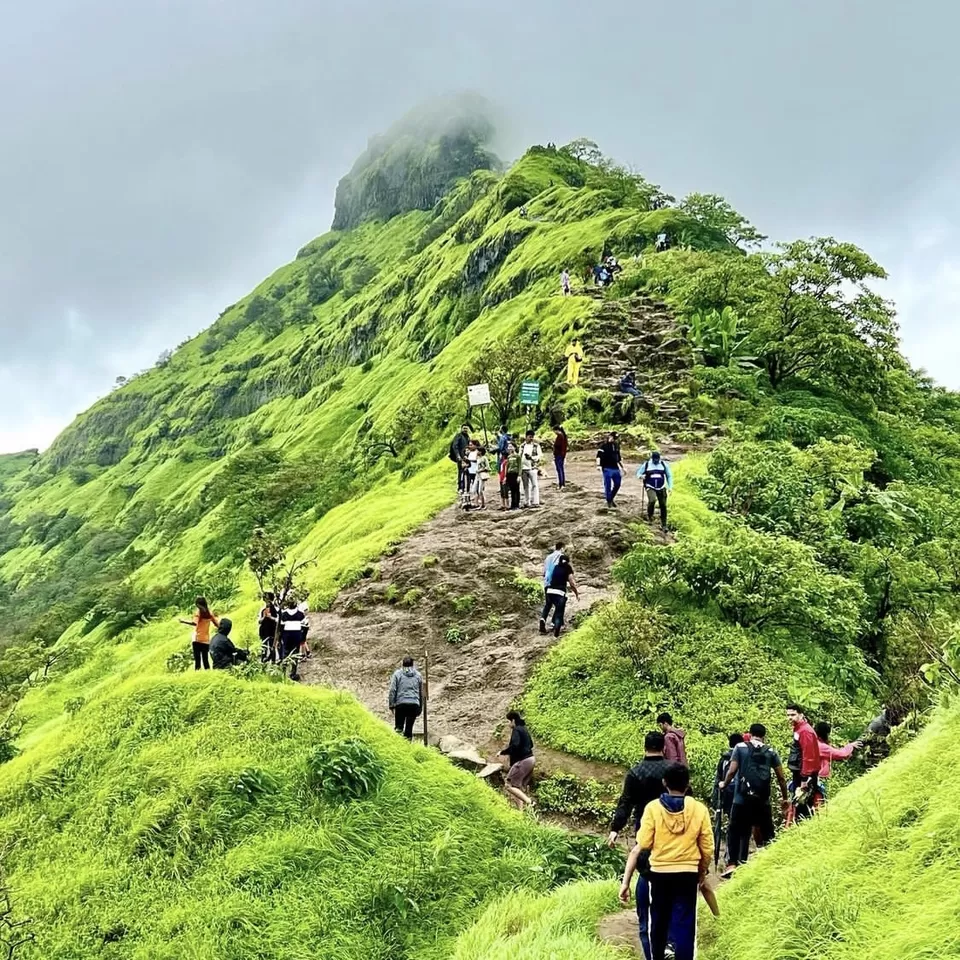
Trek Difficulty
The trek difficulty level of Tikona Fort is easy to moderate. The trail is not very steep or slippery, except for some sections near the summit. The elevation gain is about 1000 feet, which is not very high or challenging. The trek can be done by anyone who has a basic level of fitness and stamina.
However, some factors that may affect the trek difficulty are:
The weather: The trek may become more difficult or dangerous in the rainy season as the trail may become muddy, slippery, or flooded. The views may also be obscured by fog or clouds. The best time to visit Tikona Fort is in the winter or summer season when the weather is clear and pleasant.
The crowd: The trek may become more crowded or noisy on weekends and holidays as many people visit Tikona Fort for a day trip or a picnic. The trail may also become more littered or polluted by the visitors. The best time to visit Tikona Fort is on weekdays or early mornings when the crowd is less and the atmosphere is more peaceful.
The equipment: The trek may become more comfortable or enjoyable if you carry the right equipment and gear for the trek. Some of the essential items that you should carry are:
1. A backpack that can fit all your belongings
2. A water bottle that can keep you hydrated
3. A snack or a lunch box that can keep you energized
4. A hat or a cap that can protect you from the sun
5. A sunscreen or a lotion that can prevent sunburns
6. A jacket or a sweater that can keep you warm
7. A camera or a phone that can capture the memories
What to See & Do at Tikona Fort
Tikona Fort is not only a trekking destination but also a historical and architectural marvel. There are many things to see and do at Tikona Fort that will make your visit worthwhile and memorable. Some of the things to see and do at Tikona Fort are:
1. Explore the Fort Structures
Tikona Fort is one of the best-preserved forts in Maharashtra. It has many structures and features that showcase its history and glory. Some of the structures and features that you can explore are:
- The fort walls and bastions that surround the fort and provide defense and security
- The entrance gate that has a carved arch and a watchtower
- The ramparts and cannons that were used for firing at the enemies
- The caves and water tanks that were used for storing food and water
- The secret tunnels and escape routes that were used for emergencies
2. Visit the Temple
Tikona Fort has a temple dedicated to Lord Shiva, who is also known as Trimbakeshwar Mahadev. The temple is situated at the highest point of the fort and offers panoramic views of the surrounding landscape. The temple is small but beautiful, with a stone idol of Lord Shiva, a Nandi bull, and a Shivling. The temple is also a place of worship and pilgrimage for many devotees who visit Tikona Fort.
3. Camp at the Summit
Tikona Fort is a perfect place for camping as it offers a serene and scenic environment. You can pitch your tent at the summit of the fort and enjoy the views of the sunrise and sunset. You can also enjoy the starry night sky and the cool breeze. You can also light a bonfire and roast some marshmallows or sing some songs. Camping at Tikona Fort is a great way to experience nature and adventure.
4. Rappel Down the Walls
Tikona Fort is also a great place for rappelling as it has steep walls and cliffs that challenge your skills and courage. Rappelling is an activity where you descend down a vertical surface using ropes and harnesses. Rappelling at Tikona Fort is an exhilarating and thrilling experience that will test your limits and give you an adrenaline rush.
5. Take Photos or Videos of the Views
Tikona Fort offers stunning views of the surrounding valleys, lakes, and mountains. You can capture these views in your photos or videos and share them with your friends and family. You can also use your photos or videos as wallpapers or screensavers for your devices. You can also use your photos or videos as souvenirs or memories of your trip to Tikona Fort.

Sightsee Nearby Attractions
Tikona Fort is not the only attraction in the area. There are many other attractions nearby that you can visit after or before your trek to Tikona Fort. Some of these attractions are:
1. Pawna Lake: A man-made lake that is famous for its boating, camping, fishing, and picnic activities.
2. Lohagad Fort: Another hill fort that is famous for its history, architecture, and views.
3. Visapur Fort: A twin fort of Lohagad that is famous for its waterfalls, caves, and carvings.
4. Tung Fort: A conical fort that is famous for its trekking, rock climbing, and bird watching activities.
5. Karla Caves: A group of rock-cut caves that are famous for their Buddhist sculptures, paintings, and stupas.
Best Time to Visit Tikona Fort
The best time to visit Tikona Fort is in the winter or summer season, when the weather is clear and pleasant. The winter season lasts from November to February, and the summer season lasts from March to May. During these seasons, you can enjoy the trekking experience and the views from the fort without any hassle or discomfort.
The winter season is ideal for trekking as the temperature is cool and comfortable, ranging from 10°C to 25°C. The sky is blue and clear, offering a great visibility of the landscape. The breeze is refreshing and soothing, making you feel relaxed and rejuvenated.
The summer season is also good for trekking as the temperature is warm and moderate, ranging from 20°C to 35°C. The sky is bright and sunny, offering a great contrast of the greenery and the water. The air is dry and crisp, making you feel energetic and lively.
However, some factors that you should consider before visiting Tikona Fort in these seasons are:
The crowd: The crowd may be more or less depending on the season. The winter season may attract more visitors as it is a peak tourist season for Lonavala and nearby places. The summer season may attract less visitors as it is an off-season for Lonavala and nearby places. You should choose the season that suits your preference and mood.
The cost: The cost may vary depending on the season. The winter season may be more expensive as it is a peak tourist season for Lonavala and nearby places. The summer season may be cheaper as it is an off-season for Lonavala and nearby places. You should choose the season that suits your budget and value.
The availability: The availability may differ depending on the season. The winter season may have more availability of transport, accommodation, food, and guides as it is a peak tourist season for Lonavala and nearby places. The summer season may have less availability of transport, accommodation, food, and guides as it is an off-season for Lonavala and nearby places. You should choose the season that suits your convenience and flexibility.
You should avoid visiting Tikona Fort in the rainy season, which lasts from June to October. During this season, the weather is wet and humid, ranging from 15°C to 30°C. The sky is cloudy and foggy, reducing the visibility of the landscape. The trail is muddy and slippery, increasing the difficulty and risk of the trek.
Conclusion
Tikona Fort is a must-visit destination for anyone who loves trekking, history, architecture, or nature. It is a place where you can experience adventure, culture, beauty, and peace. It is a place where you can create memories that will last a lifetime.
If you are planning to visit Tikona Fort soon, we hope that this article has helped you with all the information and guidance that you need. We also hope that you have enjoyed reading this article as much as we have enjoyed writing it.
If you have any feedback or questions about Tikona Fort or this article, please feel free to share them with us in the comments section below. We would love to hear from you and answer your queries.
Thank you for choosing Tripoto as your travel partner. We wish you a happy and safe journey to Tikona Fort!




